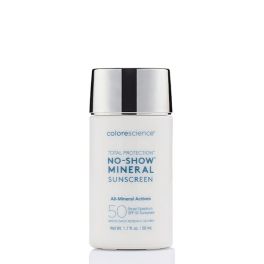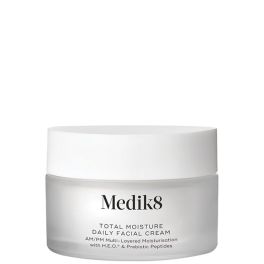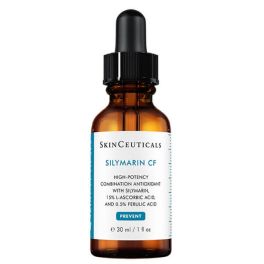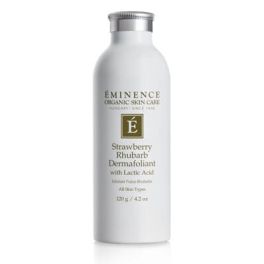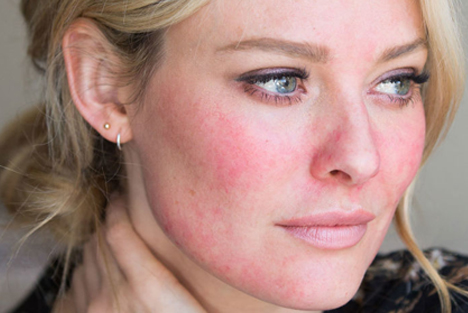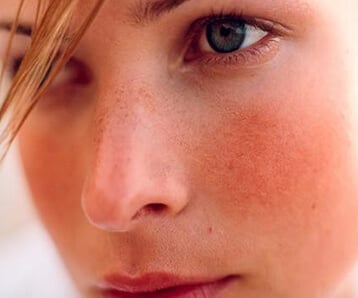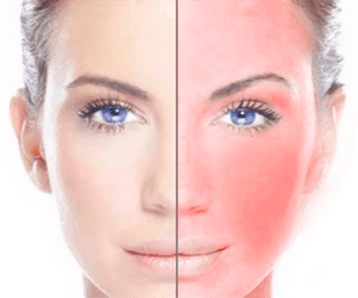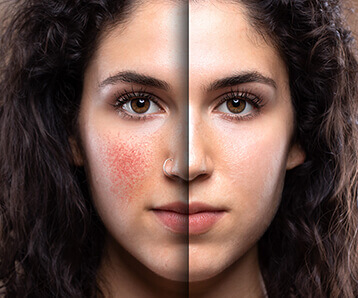Rosacea Guide Posted on 11 Oct 2011
Guide to Rosacea
Rosacea is a skin condition that affects the appearance of your face that usually develops slowly and can continue to get worse over time. It first appears as a redness (flushing or blushing) appearing on the cheeks, nose, chin and forehead. As rosacea first develops, the symptoms tend to come and go. Rosacea often begins with a tendency to flush or blush easily. At the initial onset, symptoms are usually confined to the centre of the face, but rosacea can involve the cheeks, forehead, chin, and nose.
Rosacea is a chronic skin condition, persisting for years with periods of exacerbation and improvement. The condition may appear to improve and then inexplicably flare up and appear even worse than before. If left untreated, the redness can become permanent and tiny blood vessels may become visible. As rosacea advances, pimples often develop. Because some signs of rosacea resemble acne, it is sometimes referred to as “acne rosacea” however, unlike acne, no comedones are present. In its advanced state, the nose becomes bumpy, red and swollen. Rosacea rarely occurs beyond the face and contrary to popular myths it's not caused by poor hygiene or by drinking through a number of lifestyle factors that cause the condition to flare up.
Rosacea often occurs in people of Scandinavian, Scottish, Welsh, or eastern European descent ranging from 20 to 70 years old. While it tends to occur more frequently and is more apparent in people with fair skin, rosacea has been diagnosed in Asians and African-Americans and can occur in any skin type. Women are more likely to get rosacea than men; however, men are more likely to experience more severe symptoms such as rhinophyma (bulbous nose).
Common Rosacea symptoms are:
• Frequent redness, blushing or flushing on the face
• Pimple-like facial blemishes (some contain pus and others do not)
• Bumps or lumps on the nose
• Watery or irritated eyes
• Small red lines on your face caused by enlarged blood vessel
Causes of Rosacea
The causes are unknown. Various theories suggest that rosacea is caused by bacteria, mites, a fungus, a malfunction of the connective tissue under the skin or psychological factors but none of these is proven. People are susceptible due to a variety of factors such as heredity and skin colour.
What aggravates Rosacea?
Certain things are known to aggravate or cause rosacea flare-ups in some individuals, particularly factors which cause a rise in core body temperature.
Food and condiments: Hot and spicy foods, soy sauce, vinegar. Balance hot foods with a cool drink or fruit. Avoid hot spices.
Alcohol: Red wine, beer, bourbon, gin, vodka, champagne. Add ice or mix, or try a spritzer instead of wine.
Hot Drinks: Hot cider, hot chocolate, coffee, tea. Limit your intake and try iced coffee or tea.
Emotion: Stress, anxiety, flushing, blushing. Take a walk to cool off, deep breaths or run your wrist under cold water.
Physical: Exercise, lifting, elevated blood pressure. Dress appropriately. Drink cold water and take breaks.
Skin Care: Cosmetics, hair sprays with alcohol, witch hazel or fragrances, hydro-alcoholic or acetone substances, anything causing redness or stinging. Read labels and check with your pharmacist.
Temperature: Saunas, hot baths, feeling overheated, warm environment. Limit your exposure and stay in an air-conditioned area if possible.
Weather: Sun, hot days, strong winds, cold, humidity. Wear light cotton clothing. Protect yourself from the sun with a hat and sunscreen. Wear a scarf when out in the cold.
Medical Conditions and Medication: Frequent flushing, menopause, chronic cough, caffeine-withdrawal syndrome, vasodilators, topical steroids. Always check with your doctor.
Rosacea Progression:
Early Stage
Redness appears on the cheeks, nose, forehead or chin that comes and goes. Tiny blood vessels may become visible on the surface of the skin. In some cases, the eyes may feel gritty.
Middle Stage
Facial redness becomes ruddier and more permanent. Pimples appear as the disease progresses. These may appear as papules (small, red, solid bumps). Tiny blood vessels may become increasingly visible. Enlarged blood vessels called telangiectasia may develop. While they may produce a web-like look, they are not always visible. In some cases, the eyes may become bloodshot.
Late Stage
Inflammation of the skin grows increasingly severe. Men especially may develop fleshy bumps on the nose. As the number of bumps increases, the nose may appear swollen. This condition is called rhinophyma.
Treatments for Rosacea
It's important for you to talk to your doctor or dermatologist about a rosacea treatment strategy that includes applying your medications, avoiding and managing the things that trigger rosacea symptoms and maintaining a good skincare routine. Left untreated, rosacea can ravage the complexion and affect self-esteem. Most dermatologists consider that early treatment will prevent the worsening of rosacea. At the present, there is no cure for rosacea however it is treatable. Treatments may stop the progression of the disease and, in some cases, reverse the progress. It is important to seek medical care early and follow the physician’s treatment program. Without treatment, rosacea can cause permanent damage and facial disfigurement, which, in some severe cases, may require surgery.
Treatment depends on the physician’s evaluation of the condition, what symptoms are present, and your own feelings about treatment. In most cases, doctors prescribe a topical antibiotic gel combined with oral antibiotics as initial treatment. This is followed up by long-term therapy with a topical antibiotic gel alone to prevent a recurrence. Over-the-counter therapies are not recommended for the treatment of rosacea, and acne preparations may make it worse.
Whatever the choice of treatment, continued, regular use of the rosacea medication will help control redness and the number of pimples over the long term. Proper use of the medication should show results after several weeks. To properly care for your skin, follow this daily four-step, skin-care regimen.
Skin Care for Rosacea sufferers
1. Cleanse
Skin cleansing should remove dirt without upsetting your skin’s protective layers or natural pH balance. Everyday soaps and cleansers are often harsh, causing dryness and irritation. Because rosacea-prone skin can be easily irritated, it is important to cleanse with a non-irritating, soap-free, oil-free and fragrance-free, gentle skin cleanser. Apply cleanser gently with your fingertips. Rinse with lukewarm water, not hot water, and blot with a soft towel.
2. Medicate
There is no substitute for medical treatment in the effective management of rosacea. Once diagnosed, carefully follow your prescribed treatment. Apply your prescription medication in a thin layer across the affected areas only and allow it to dry before applying moisturiser, makeup or sunscreen.
3. Moisturise and Protect
Rosacea is noted for causing dryness to the skin and can upset your facial skin’s normal protective barrier. To help restore moisture without causing irritation, apply a long-lasting water-based moisturiser in a cream or lotion formulation. Make sure you choose a product that does not contain fragrances or lanolin and is non-comedogenic. For moisturising during the day, apply broad-spectrum sun protection.
4. Maintain
You can help maintain your skin’s normal healthy state by cleansing and moisturising your face once in the morning and again before bedtime.
If you suspect that you have rosacea, see your doctor for proper diagnosis and treatment.
Learn more in our skincare guide on the Top 5 Moisturisers for Rosacea.
For SD, learn How to treat Seborrheic Dermatitis written by Dermacare's aesthetics experts.













